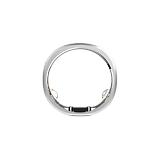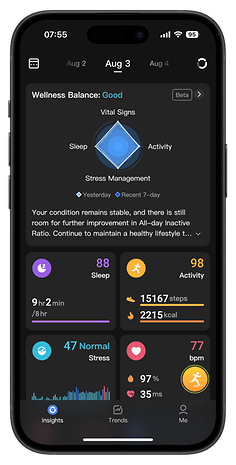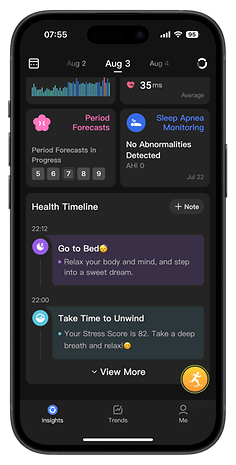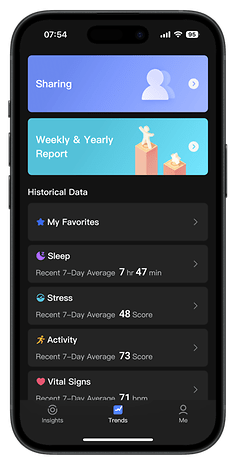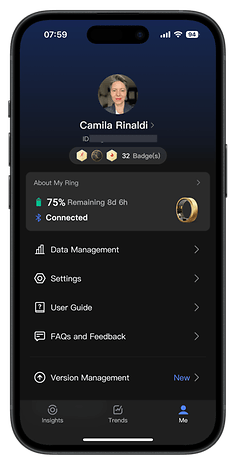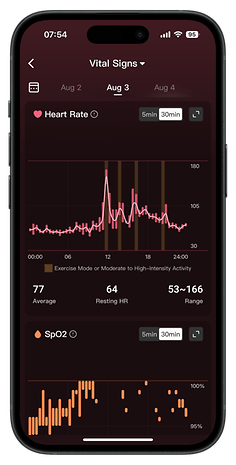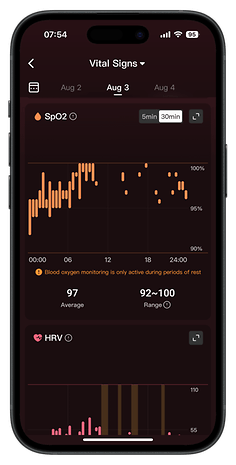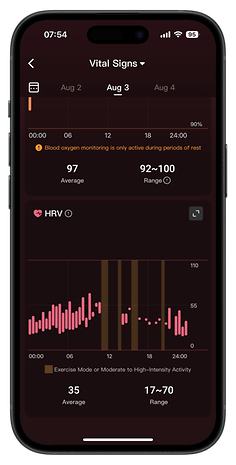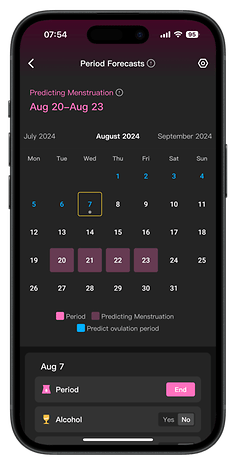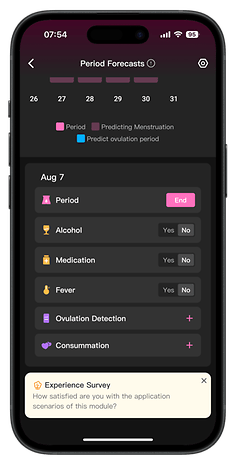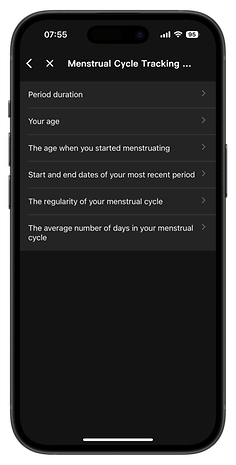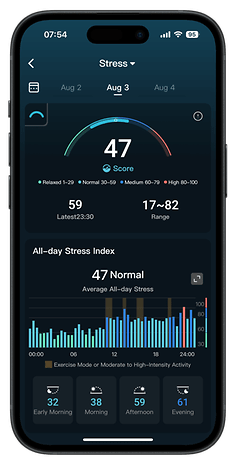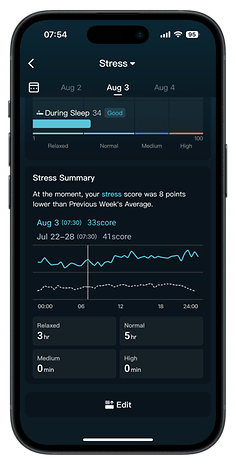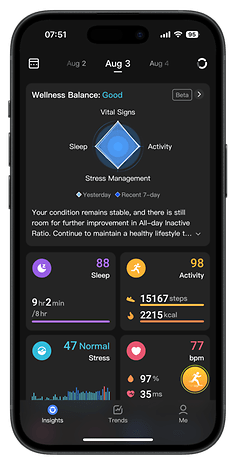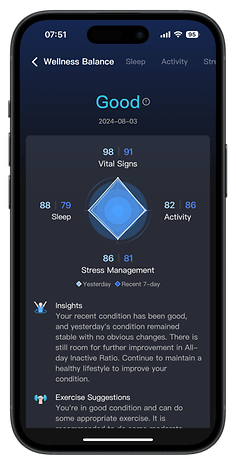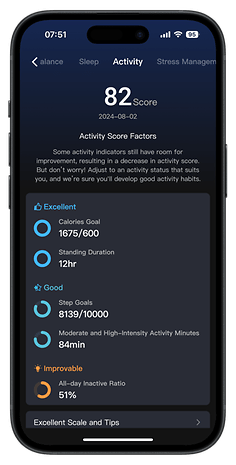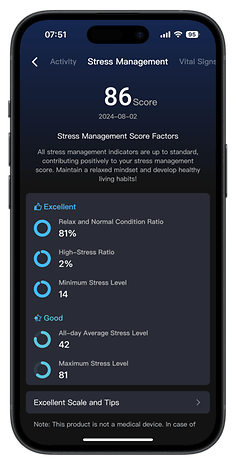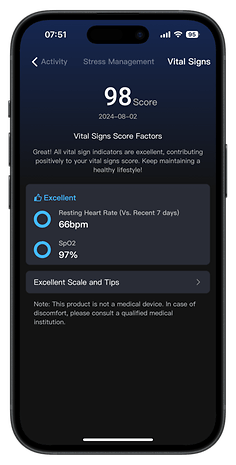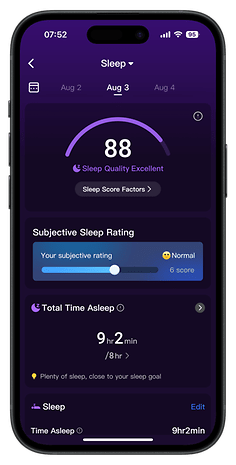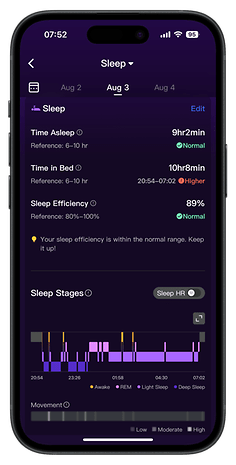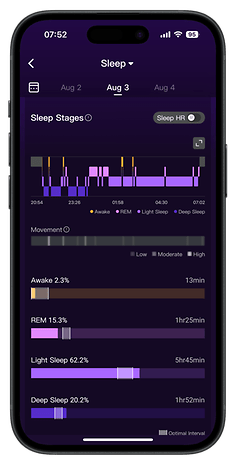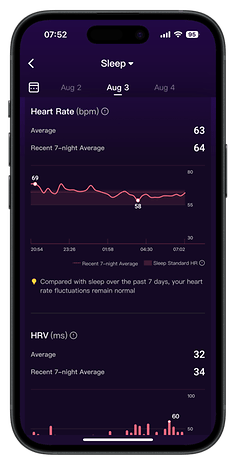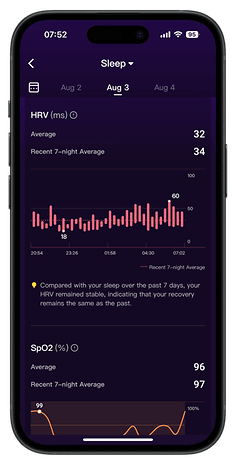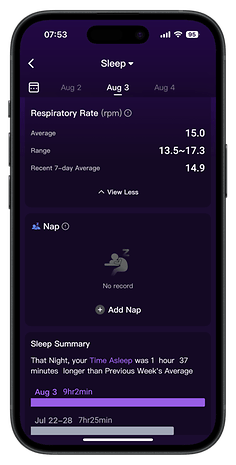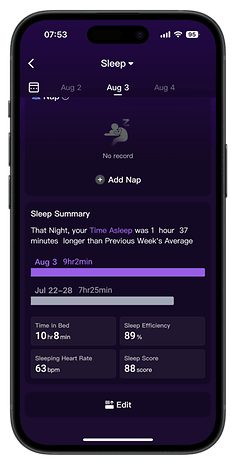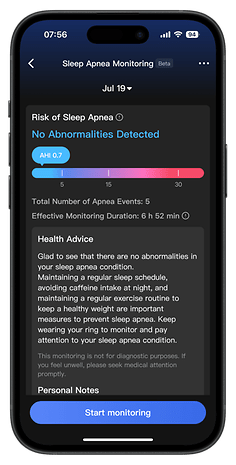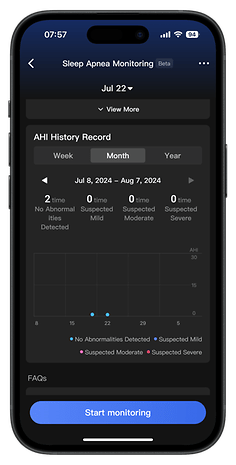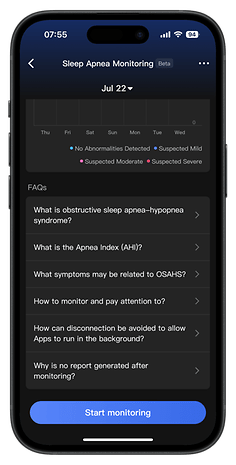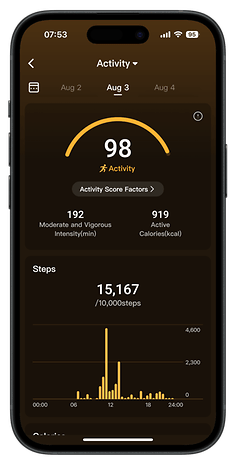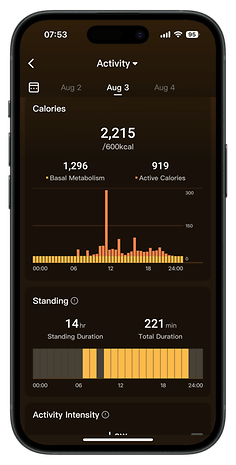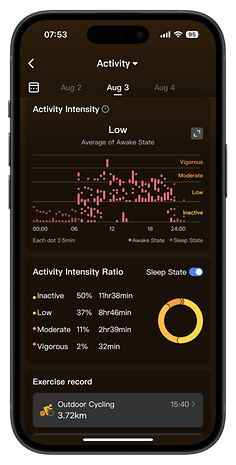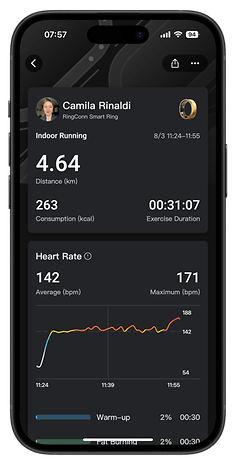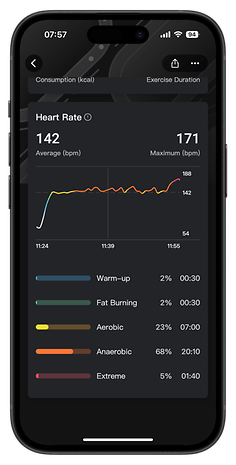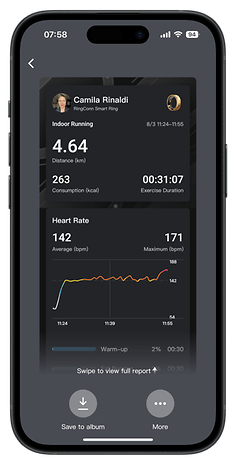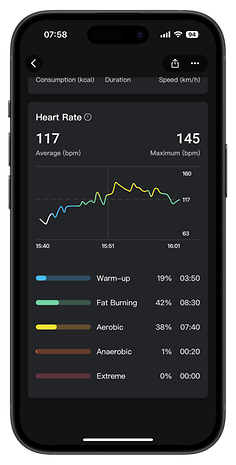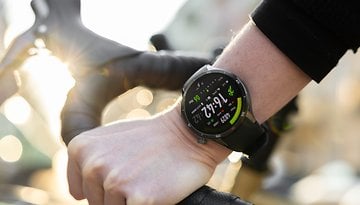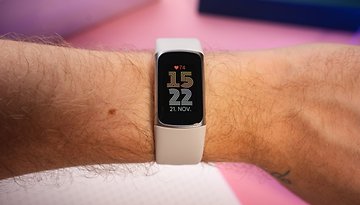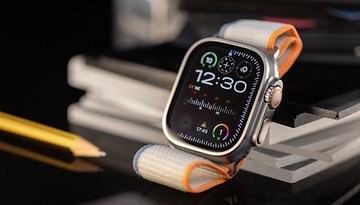RingConn Gen 2 Review: Elevating Smart Ring Standards
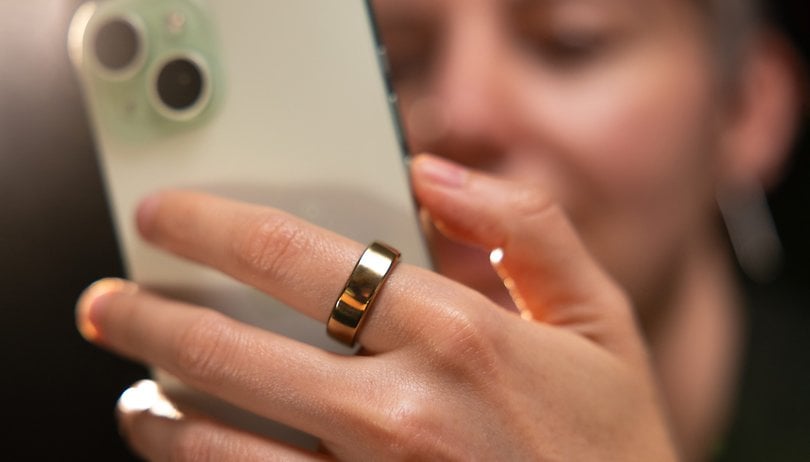

RingConn made waves with their initial smart ring, and now they're back with the second generation. The new model promises enhanced features and notable improvements. In this review, we explore the innovations and upgrades that make the RingConn Gen 2 a compelling choice.
Good
- Ultra-thin & light
- IP68 water-resistant
- iOS/Android compatible
- Ingenious health monitoring
- Sleep apnea monitoring
- No subscription fees
- 10-day battery life
Bad
- Lacks broad fitness analysis
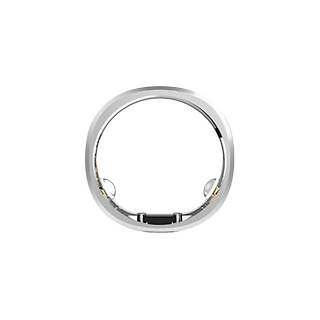
In a Nutshell
After reviewing the first generation of the RingConn Smart Ring, I’ve got to say, this new model shows some real improvements. It's lightweight and super comfy on the index finger. With over 10 days of battery life and a portable charging case, it’s got your back. Plus, it has top-notch dust and water resistance. The standout feature? It delivers a 90.7% accuracy in identifying sleep apnea—though it still needs FDA clearance.
The company just kicked off a crowdfunding campaign on Kickstarter. You can pledge $209 to pre-order your RingConn Gen 2 with the smart charging case and USB-C to USB-C cable. After the crowdfunding campaign, the device will be available on the company's website and through retailers like Amazon.

Interestingly enough, the company set a $50,000 goal and has already raked in over $1,790,000—with 39 days still left on the clock.
Design & Durability
The second generation of the RingConn Smart Ring comes in three different colors: silver, black, and gold. This time, I tested the glossy gold version. Impressively lightweight, you hardly feel it on your finger. I’m a big fan of the ring form factor; it’s unobtrusive yet highly effective for monitoring health data .
Pros:
- Thinnest and lightest design.
- IP68 certified for top-notch dust and water resistance.
- Squarish circular shape provides added stability.
- Includes a sizing kit for the perfect fit.
Cons:
- Prone to scratches.
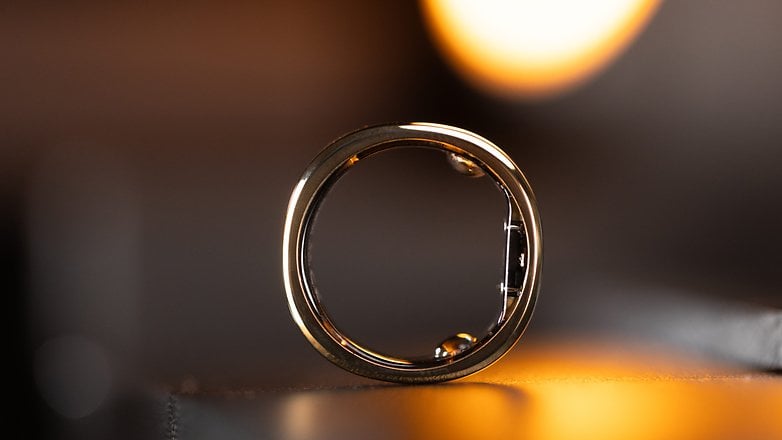
The RingConn, with a thickness of just 2 mm, has now set a new benchmark, surpassing the UltraHuman Ring Air as the world's thinnest and lightest smart ring. It also increased the durability of the lineup by adding dust and water resistance standard IP68.
These two improvements already make for a noticeable upgrade. Inside, we have packed hundreds of components into a very tiny space, which still impresses me. On the inner side, the RingConn Gen 2 smart ring includes components like the battery structure, circuit layout, chip, and sensors such as PPG, temperature, and 3D accelerometers. Even so, the smart ring remains discreet, almost passing as a traditional jewelry ring.
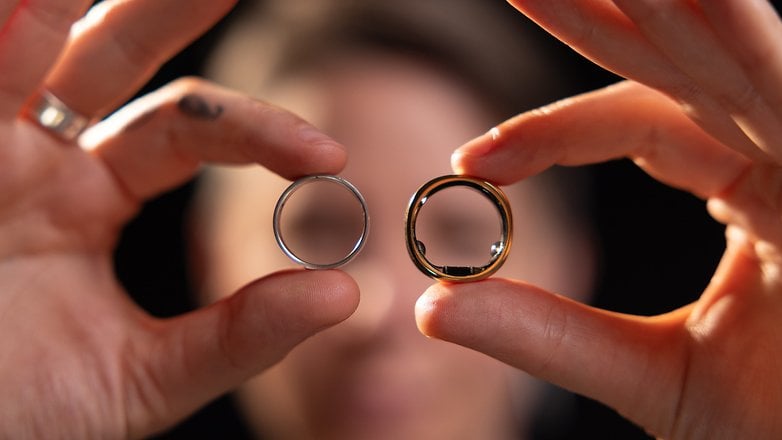
Fit & Comfort
For a smart ring to truly shine, fit and comfort are everything. RingConn gets it right by offering nine different sizes and a handy sizing kit to nail down that perfect fit. This is a big deal because the whole experience hinges on getting the fit just right.
Sure, there's a sizing guide on the RingConn store, but I'd definitely recommend grabbing the sizing kit first. It lets you try out different sizes on various fingers to see what feels best. For optimal accuracy, it's best to wear the ring on your index finger—it's typically the thickest and least intrusive, making for the most comfortable wear.
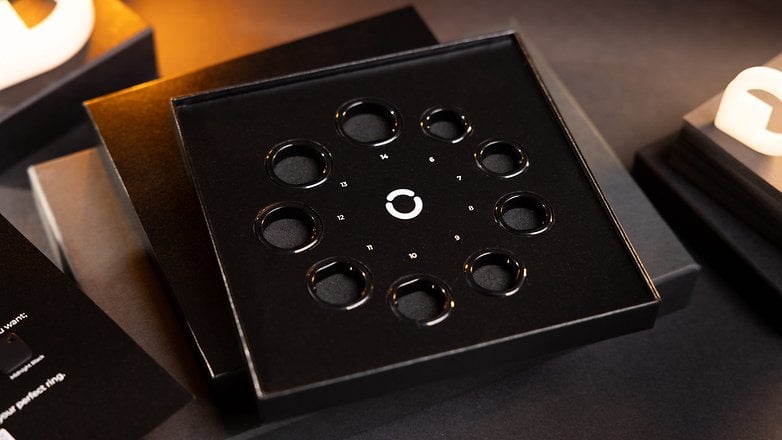
I wear a size 8 on my left hand, and it fits perfectly without any discomfort. I only take it off when I'm washing my hands or showering. The manufacturer claims it's water-resistant up to 100 meters (10 ATM), but since it doesn't have a swimming mode, I remove it before jumping in the pool anyway.
Like all smart rings, this one is susceptible to scratches. However, RingConn offers a ring protector. I haven't tried it out myself, so I can't speak to how it feels in hand. But honestly, scratches are just part of the experience.
User Experience & Features
The RingConn Gen 2 works seamlessly with both Android and iPhone, using the same companion app and user interface as its predecessor. Aside from a few new features, the user experience remains largely unchanged. It also integrates effortlessly with popular health platforms like Apple Health and Google Fit .
Pros:
- Comprehensive and user-friendly app interface.
- Compatible with both iOS and Android.
- No subscription fee.
Cons:
The RingConn app packs in a range of useful metrics like sleep quality, activity levels, heart rate, HRV, skin temperature, and SpO2 levels. For health enthusiasts, this treasure trove of data is great for making smart decisions about lifestyle and workout routines. But remember, smart rings are wellness tools, not medical devices, so take their readings with a grain of salt.
Although this is not the most efficient software for presenting its own content compared to, let's say, Whoop, the app excels in promoting healthy behavior changes. It nudges you to tweak your routines for better health. Plus, with easy integration into Apple Health and Strava, keeping all your data in sync across devices is simple.
On the flip side, the API isn't open to end-users, which is a letdown for those wanting advanced integrations like with Apple's Shortcuts app. Also, there's no browser dashboard, so you'll need to export your data straight from the app.
As for updates, the RingConn team is pretty active. I've been using the new model for almost two weeks now, and I've already received two software updates—one at the beginning of the experience and another one a week later.
Finally, as I mentioned in my review of the previous generation, RingConn, a Chinese company, stores user data in UK servers outside of mainland China. They ensure this data is encrypted and kept in high-level internal databases, aligning with GDPR regulations.
- Stay healthy, stay secure: Protecting your health data for a safer tomorrow
Wellness & Fitness Features
While design, compatibility, and user experience are important for any device, the primary focus of a health monitoring wearable should be on its health metrics capabilities. The RingConn Gen 2 provides several key features, including sleep analysis, stress monitoring, continuous heart rate and blood oxygen tracking, menstrual cycle predictions, and exercise metrics. This latest version also introduces a new feature: Sleep Apnea Monitoring .
Pros:
- The Wellness Balance score is a valuable addition.
- Extensive Sleep monitoring report.
- Includes Sleep Apnea Monitoring.
Cons:
- Fitness tracking features are still under development.
- Fitness tracking depends on having your phone with you.
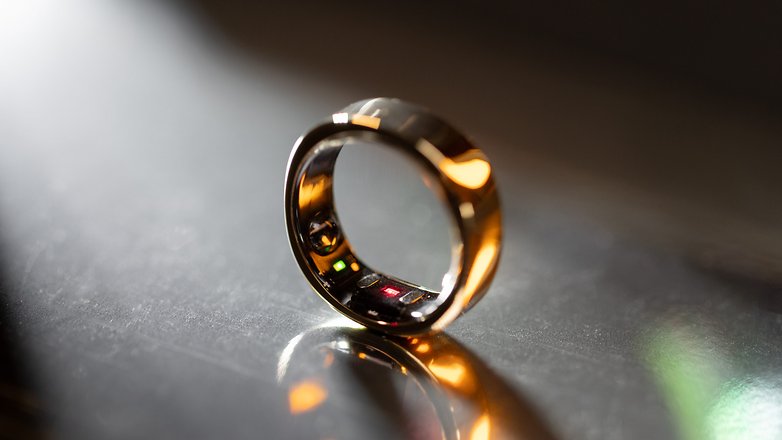
The RingConn Gen 2 smart ring packs a range of sensors for detailed health monitoring. It boasts four photoplethysmography (PPG) optical sensors, two temperature sensors, and a 3D accelerometer. These sensors track metrics like heart rate, blood oxygen levels, stress, and sleep patterns. While this level of functionality is impressive given the ring's compact size, it's important to note that these are not medical-grade devices and are designed for general wellness tracking rather than precise medical measurements.
In the sections below, I'll compare its performance with the new OnePlus Watch 2R, the Whoop, and the Wahoo Tickr chest strap.
Wellness Balance Score
The RingConn Gen 2 offers a smart way to monitor your health by tracking vital signs. Its Wellness Balance score, currently in beta, delivers useful insights drawn from your activity levels, stress, vital signs, and sleep quality.
The app keeps tabs on your physical and mental state throughout the day, generating a score that ranges from Excellent and Good to Improvable. For that, data from the last seven days are used to compare with the current status of the wellness balance metrics.
Once your score is calculated, the AI model kicks in with insights, exercise suggestions, and indicators for areas needing improvement. You can use this feature if you want to make specific health changes, even though the number of metrics can be overwhelming.
Sleep Analysis
First, it's incredibly comfortable to wear the smart ring to sleep, which is a major plus due to its form factor. Second, the sleep report provided by this smart ring is one of the most extensive I've tested.
The app offers a comprehensive breakdown of health parameters from sleep analysis, including heart rate, HRV (heart rate variability), SpO2 (blood oxygen saturation), respiratory rate, and skin temperature. It also provides detailed insights into sleep quality, stages, and efficiency, giving a thorough picture of your nightly rest and overall health.
This detailed data highlights patterns and trends in your sleep. Monitoring heart rate and HRV can show how well your body recovers overnight, while SpO2 levels indicate how efficiently oxygen is being carried to your extremities, reflecting your breathing quality. Tracking sleep stages and efficiency can pinpoint issues like insufficient deep or REM sleep, allowing for adjustments in habits or environment.
When it comes to sleep stage metrics, the RingConn Gen 2 reported a sleep quality score of 78, an HRV of 27ms, and a total sleep duration of 6 hours and 43 minutes. The breakdown? 3.1% awake, 19.2% REM, 51.2% light sleep, and 26.5% deep sleep. These figures line up nicely with the Whoop and OnePlus Watch 2R, which showed similar sleep stage distributions and durations.
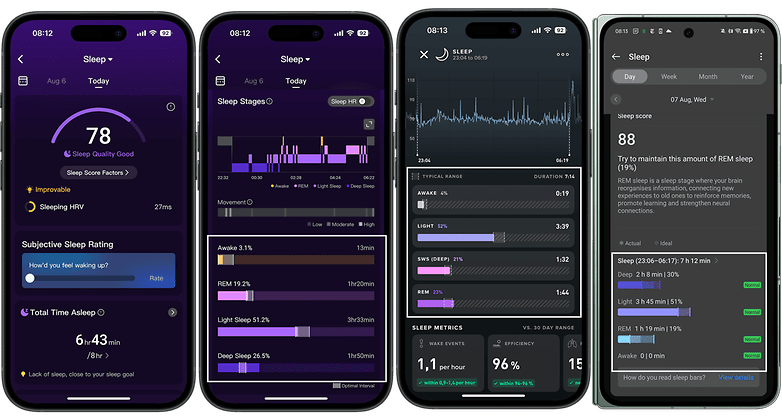
Sleep Apnea Monitoring
Still on the sleep topic, the RingConn brings sleep apnea monitoring to its smart ring, a significant upgrade considering that traditional diagnosis requires overnight stays in sleep labs. The ring’s deep learning algorithm is said to boast a 90.7% accuracy rate in clinical studies, which is impressive for such a tiny device.
The continuous sleep apnea monitoring feature is integrated into the app and is easy to set up; just ensure the app is running in the background and both the ring and phone are charged.
Given the serious health risks associated with sleep apnea, such as hypertension, heart disease, and strokes, this feature can be a game-changer. I recently had a family member diagnosed with severe apnea, and the treatments can be very invasive. Early detection can help differentiate between simple snoring and actual apnea events, guiding appropriate treatment options.
I tried out the feature myself, though I don’t have sleep abnormalities. Because of this, I will focus on explaining what happens behind the scenes only. The RingConn Gen 2 uses advanced sensors (infrared, red, and green) to monitor SpO2, heart rate, and respiratory rate, detecting irregular breathing patterns indicative of sleep apnea. The app provides detailed insights and alerts for any detected abnormalities.
Although I believe the RingConn smart ring might not replace a detailed lab test, it can highlight potential issues. It's important to note that RingConn is still pursuing FDA clearance for this feature.
Fitness Tracking and Activity Metrics
I find smart rings to be excellent and comfortable for tracking daily wellness metrics. However, they shouldn't be expected to provide the advanced workout stats you get from a smartwatch.
The RingConn Gen 2 offers a limited selection of workout modes—just four: outdoor and indoor running, outdoor cycling, and walking. If you're looking for more advanced fitness tracking, this may not be the right device for you. Additionally, since the ring lacks built-in GPS, you'll need to have your phone with you during outdoor activities.
On the positive side, this smart ring provides a detailed analysis of daily activities, including steps taken, calories burned, standing time, and activity intensity. It even offers an Activity Score. The app visually breaks down calorie expenditure into basal metabolism and active calories, categorizes activity intensity, and compares it to the previous week.
While I find smart rings helpful for wellness tracking, I still prefer using a smartwatch for more detailed workout analysis.
Here's a quick breakdown of the RingConn Gen 2’s heart rate monitoring during an indoor run. It clocked in with an average heart rate of 146 bpm and a max of 173 bpm. These numbers stack up well against the competition: Wahoo's chest strap showed 150 bpm average and 175 bpm max, Whoop logged 146 bpm average and 174 bpm max, and the OnePlus Watch 2R hit 151 bpm average and 176 bpm max. Bottom line? The RingConn Gen 2 is reliable and holds its own among the competition.
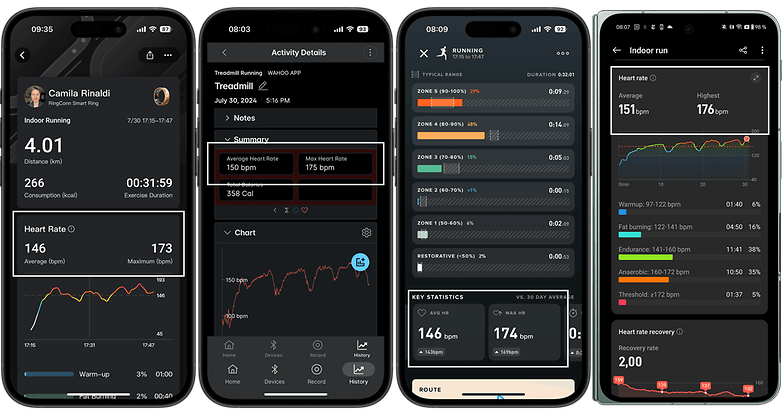
Charging & Battery Life
Even though the new model is slimmer, lighter, and packs in more features, it manages energy way better. The battery life has jumped from 7 to 10 days compared to the previous generation. And honestly, you might squeeze out even more depending on how you use it. For this review, I pushed the device pretty hard and still got 10 days out of it. With a regular routine, it could last even longer !
Pros:
- Impressive 10-day battery life.
- Ingenious travel charging case.
Cons:
- -
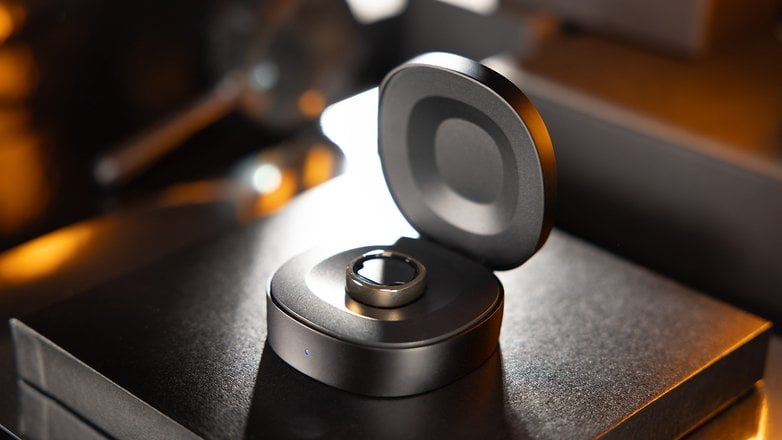
I've been a big fan of RingConn's charging solution since the previous model. The charging case, included in the box, packs a 500 mAh capacity, giving you up to 150 days of charging support for the ring—perfect for when you're on the go.
Charging the RingConn Gen 2 is quick and easy. It hits 50% in just 27 minutes and reaches a full charge in 89 minutes. The best part is that with this battery life, it can last you for ten days straight.
The RingConn research team advises that to keep the ring's battery in top shape, you shouldn't leave it uncharged for too long. When you're not using it, store the ring in the case, but make sure it's disconnected from a power source.
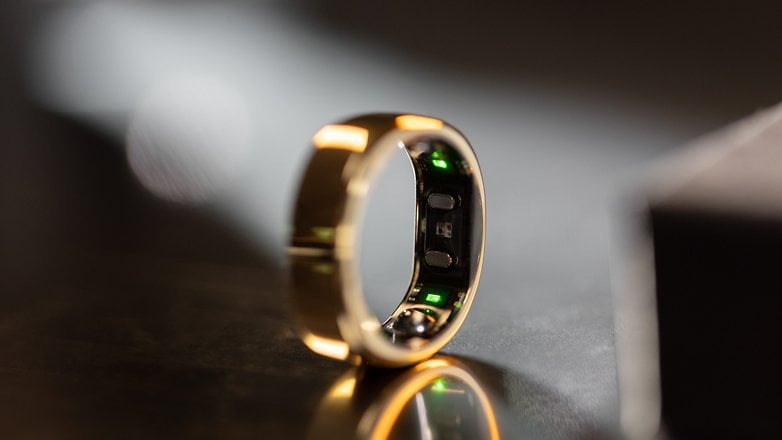
RingConn Gen 2 technical specifications
| RingConn Smart Ring Gen 2 | |
|---|---|
| Product | RingConn Smart Ring Gen 2 |
| Image | 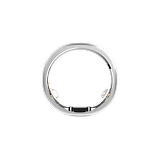 |
| Dimensions and Weight | 6.8 × 2 mm, 2-3 g |
| Colors | Silver, Black and Gold |
| Sizes | Nine (Sizes: US 6, US 7, US 8, US 9, US 10, US 11, US 12, US 13, US 14) |
| Sensors | 3-axis acceleration sensor PPG heart rate sensor SpO2 sensor Skin temperature sensor |
| Connectivity | Bluetooth 5.0 |
| Certification | 10 ATM, IP68 |
| Battery | 12 days battery life |
Final verdict
In the competitive wearable market, the Chinese company RingConn is establishing itself as a reliable brand for health monitoring. The second generation of its smart ring is an ingenious and well-designed health monitoring device that works with both iPhone and Android. Despite being ultra-thin and lightweight, it offers up to 10 days of battery life. Plus, it doesn't come with extra fees and delivers consistent results.
I believe the sleep apnea monitoring feature can significantly impact people's lives. While I wouldn't give up my smartwatch for comprehensive fitness data analysis, I fully recommend the RingConn Gen 2 smart ring for anyone interested in understanding their health better.
I'm about to test the Samsung Galaxy Ring, but its lack of iPhone compatibility and higher price ($400 compared to RingConn's $209) already puts it at a disadvantage.
Additionally, RingConn's compliance with GDPR, data encryption, and UK-based servers give me confidence in sharing my health information with them. However, I understand this might not be reassuring for everyone, so it's worth mentioning.
What's your take on the RingConn Gen 2? Would you buy one?
